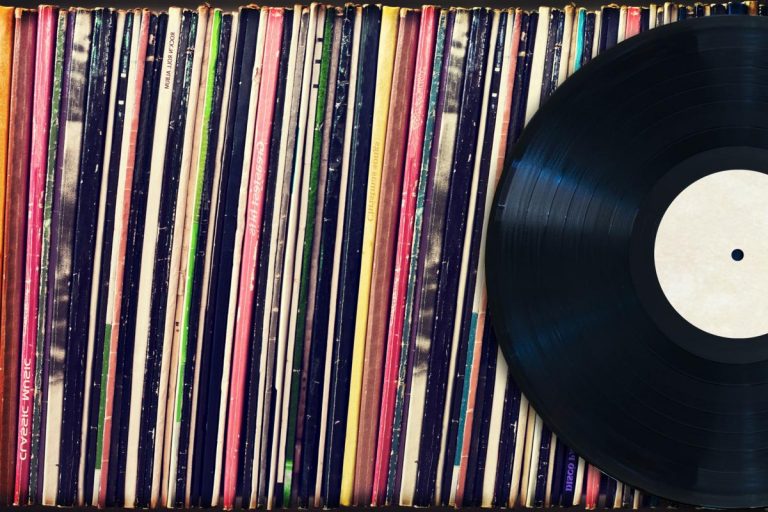Last Updated on October 8, 2021 by IDS Team
These days, you don’t need to be signed to a label to create and release your own music album. Whether you’ve got a few select tracks for an EP or enough music to lay down a full-length album, you can create your own masterpiece and release it to the masses. To get started, take a look at this step-by-step guide on how to produce, design and launch a music album:
1. Create and Select Content
If you’re releasing original music, you’ll need to write it before you can set about creating your album! Writing your own songs can take a significant amount of time but, if you’re passionate about creating music, this might be something you’ve been working on for months or years. If you’ve got this far, you may already have some tracks that are ready to go, but take the time to figure out whether they should be included on your album.
Typically, artists use an album as an opportunity to send a message or make a statement. Not all of your songs will necessarily work well together, which may indicate that they’re best featured on different albums. In the same way that you’d craft a set list, listen back to your tracks and decide which ones should be featured on your next album.
2. Perfect Your Performance
When people listen to your album, you’ll want to ensure that the audio and performance is of the highest quality. As every musician and singer knows, there’s no substitute for rehearsals. Dedicate as much time as possible to rehearsing ahead of recording your tracks for your album. The extra effort you put in will elevate your album and could have a considerable impact on your future music career.
Of course, rehearsing in the right environment is always important, so don’t settle for practicing at home. With band rehearsal space, you can access the equipment and acoustics you need to hone your performance. Some quick research will help you pinpoint the spaces available in your area. For instance, if you want to find band space in Dallas, take a look at Pirate’s Dallas rehearsal studios. Featuring drum kits, guitar amps and mics, you’ll find acoustically-treated rehearsal spaces that cater for up to six people and affordable hourly rates that allow you to rehearse to your heart’s content.
3. Find or Hire Session Musicians
Unless you’re a member of a band, you might need to work with session musicians when recording your album. These talented pros will play your music and provide the backing you need as you perform. Of course, modern technology means you can actually play every instrument yourself, if you choose to. However, if you don’t have the skills to play every instrument, working with session musicians can be an easy and effective way to complete your album. Use local industry listings or network contacts to find the right team to support you as you record and release your album.
4. Start Recording
Artists rarely record a track in one take, so don’t expect recording your album to be done in just an hour or two. Instead, you’ll want to record parts individually and listen to them back before mixing them together. This allows you to modify the sound and create the best final edit. In many cases, you’ll want to re-record parts after you’ve mixed them, so be sure to leave yourself enough time to head back into the studio.
While some artists use at-home equipment to record, this can be tricky to do in reality. Unless you have a purpose-built studio at home, noise disturbances or poor acoustics can have an impact on the quality of your album. What’s more, hiring a professional studio for a limited time can be a lot more cost-effective than investing in your own industry-grade equipment!
5. Post-Production and Mastering
Once you’ve recorded your album and you’re happy with the mixes, it’s time to enter the post-production phase of producing your own album. Although you can use professional software to do this yourself, working with an established mastering house is often the best bet. With their input and expertise, your tracks can be elevated and enhanced. In addition to this, getting your tracks featured on the radio or purchased by video producers is always easier when they’ve been professionally mastered, so it’s worth bearing this in mind.
6. Designing the Artwork
When you’re releasing an album, your primary focus will be the quality of the audio, but don’t overlook the importance of the artwork. You’ll need to reflect your personality as an artist and the content of the album, as well as engaging your target demographic.
There is a variety of software you can use to design your own album cover but getting expert help with the artwork may be beneficial. As well as including imagery, you’ll need to consider who needs to be recognized as a contributor and include any relevant legal information. Of course, you’ll also want someone to proofread the text before you approve the final version!
7. Promoting Your Album
Ideally, promotional activities should start well before your album is launched. However, you’ll need to have a clear timeline and be confident about hitting your deadline if you’re going to start promoting it in advance.
As well as featuring your album on your own website, submitting it to audio streaming sites can help you to reach a larger audience. Similarly, putting your music forward for inclusion on playlists can be a great way to attract more listeners. In addition to this, you can use online, local and even national marketing strategies to generate publicity. From reviews in industry publications to guest spots on podcasts, there are numerous ways that you can promote your music and acquire new fans.
Are You Ready to Make an Album?
Many budding musicians feel apprehensive about making an album, but there’s no need to be put off. With access to the technical equipment you need and support from industry professionals, you can begin laying down tracks, recording your set list and promoting your album any



